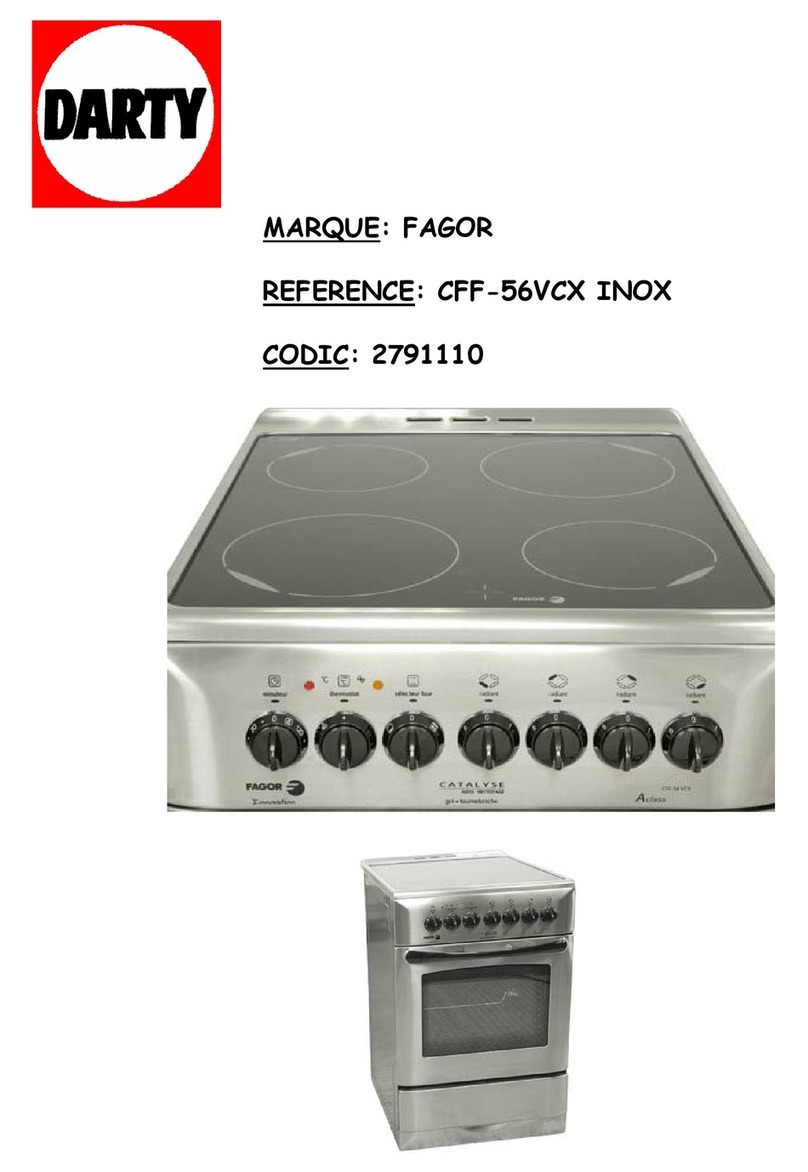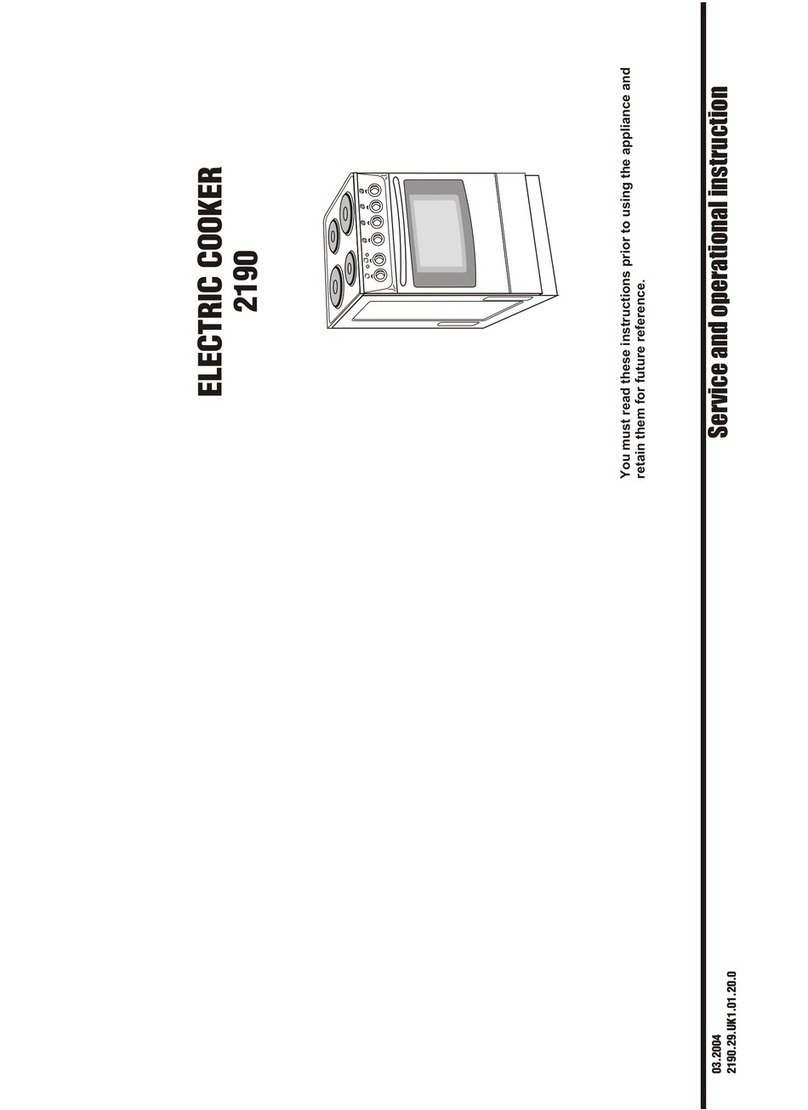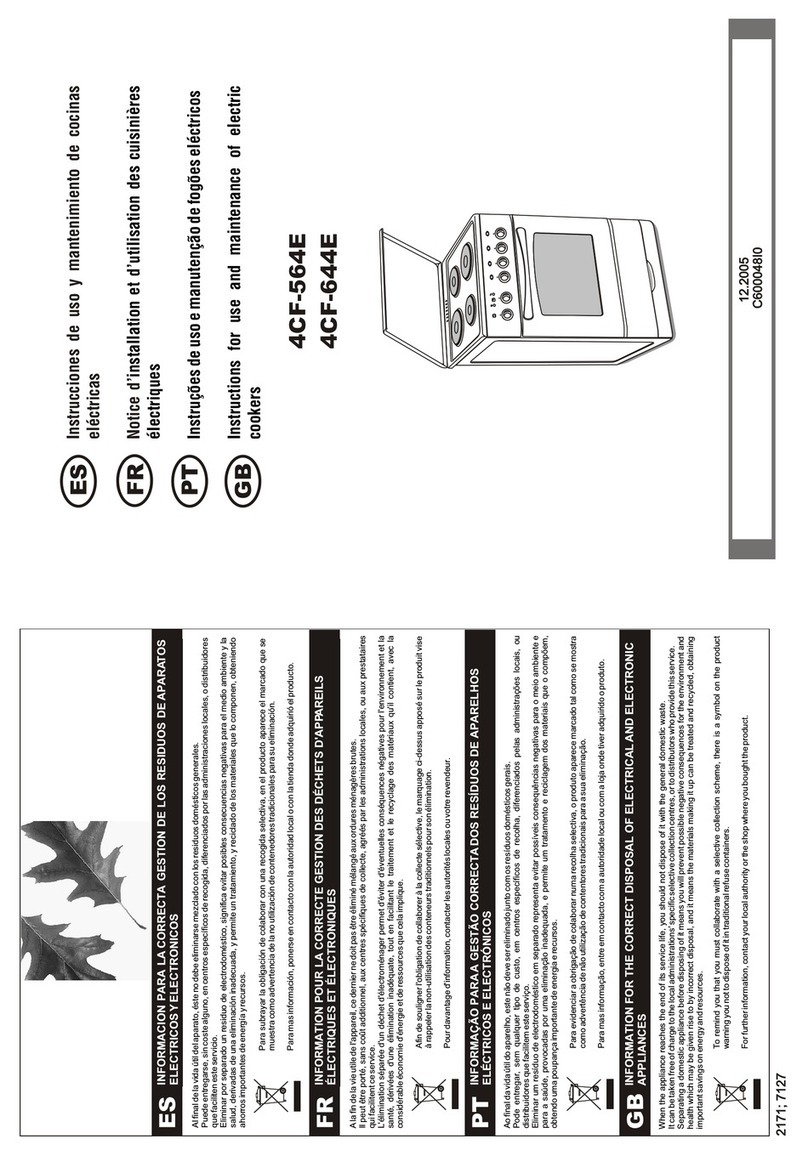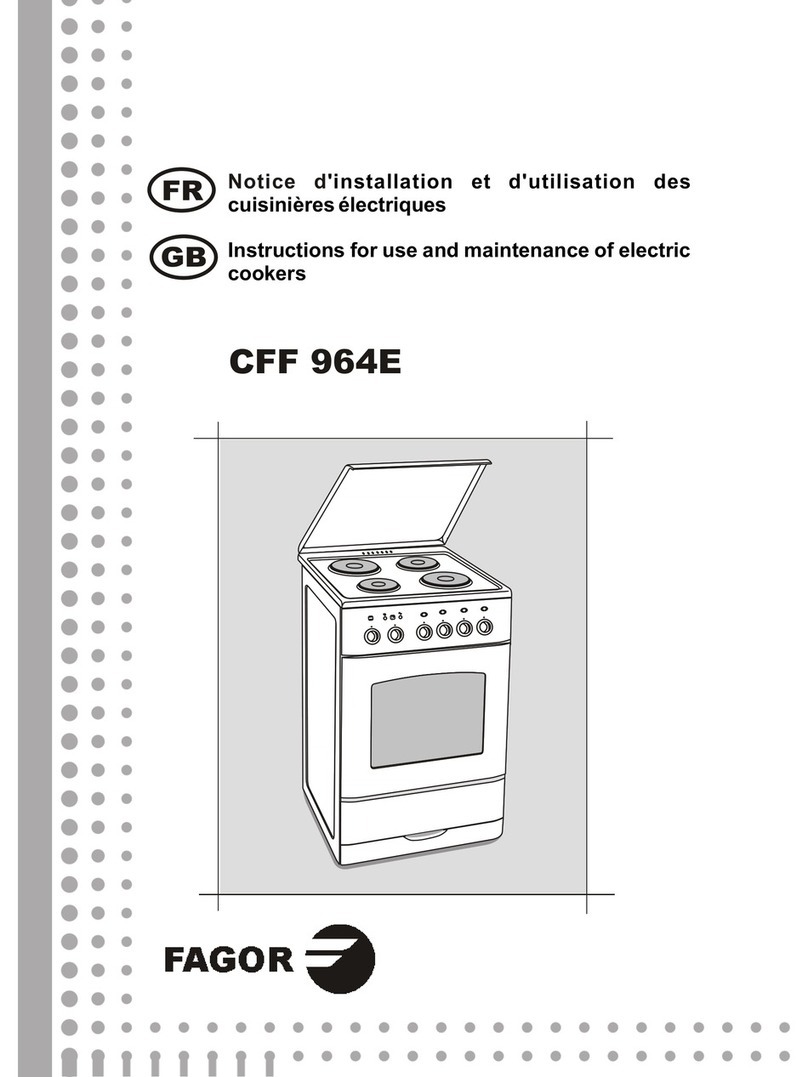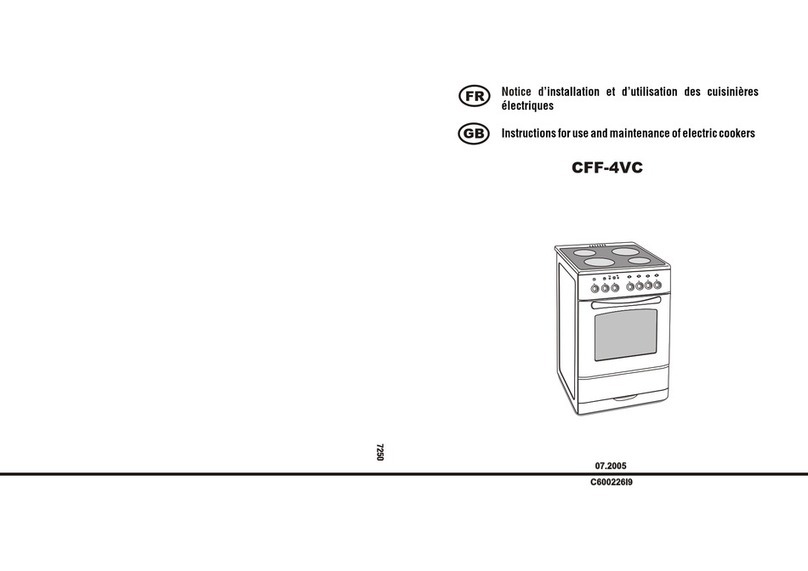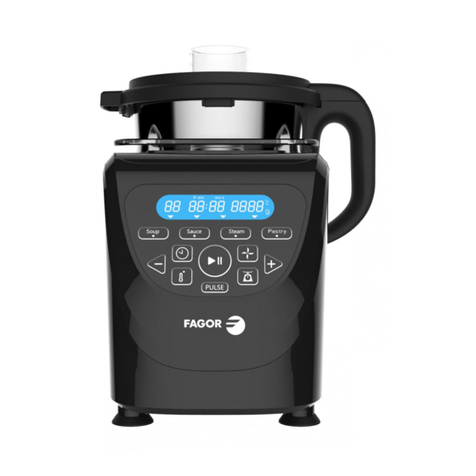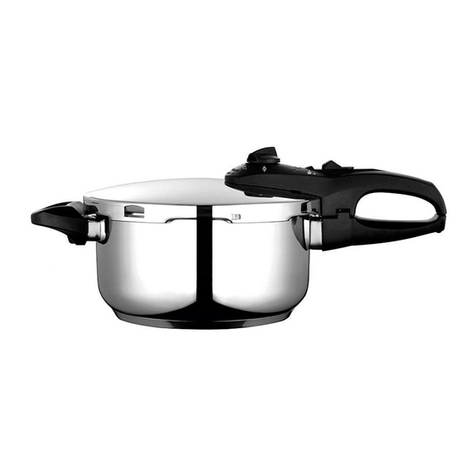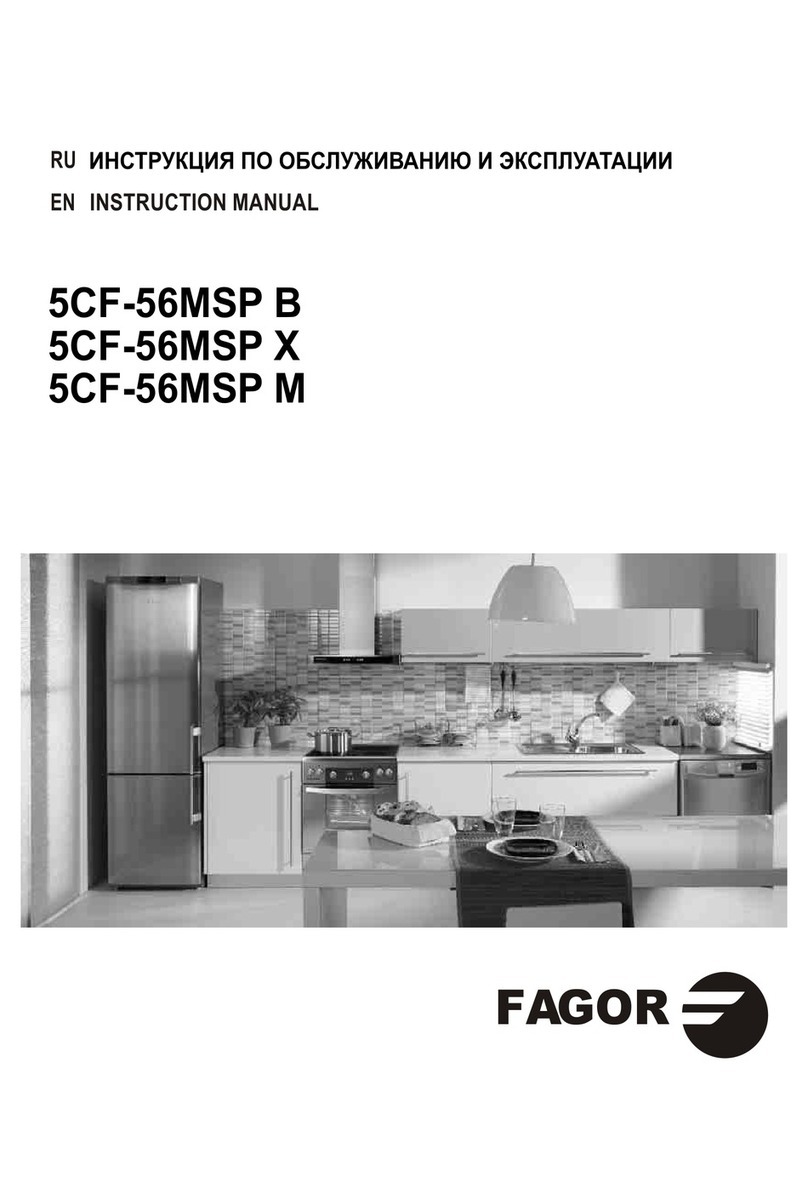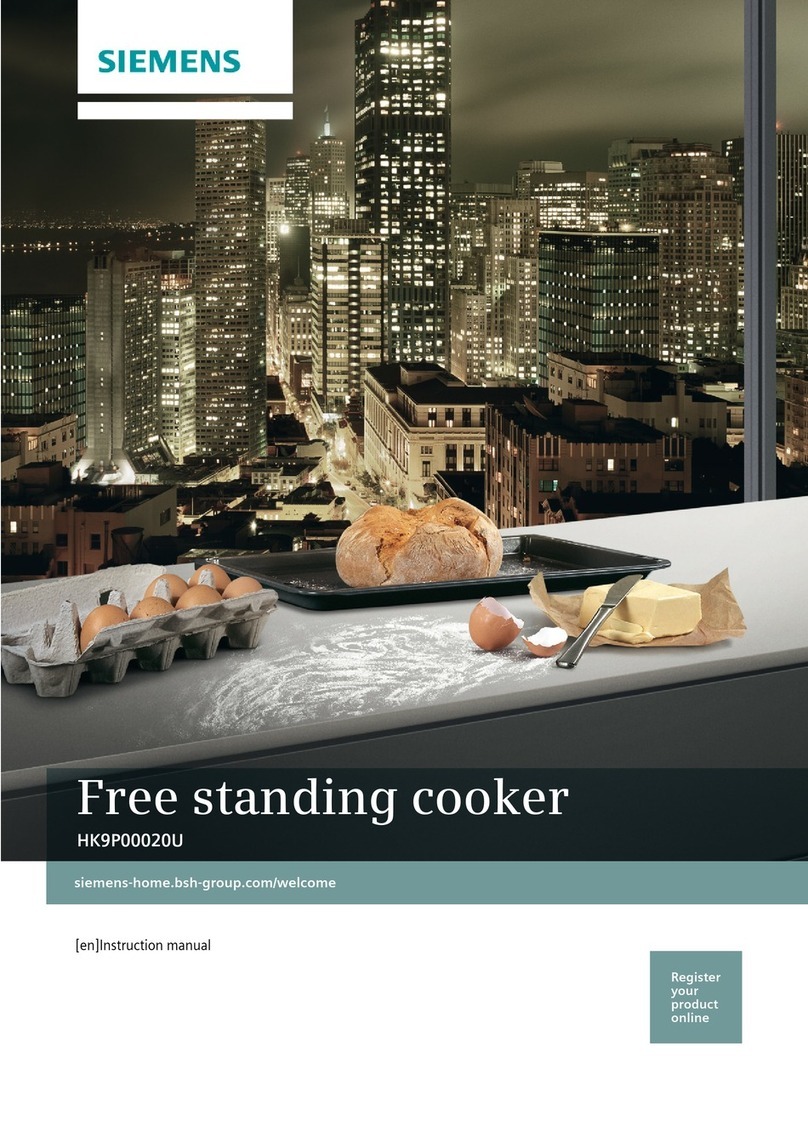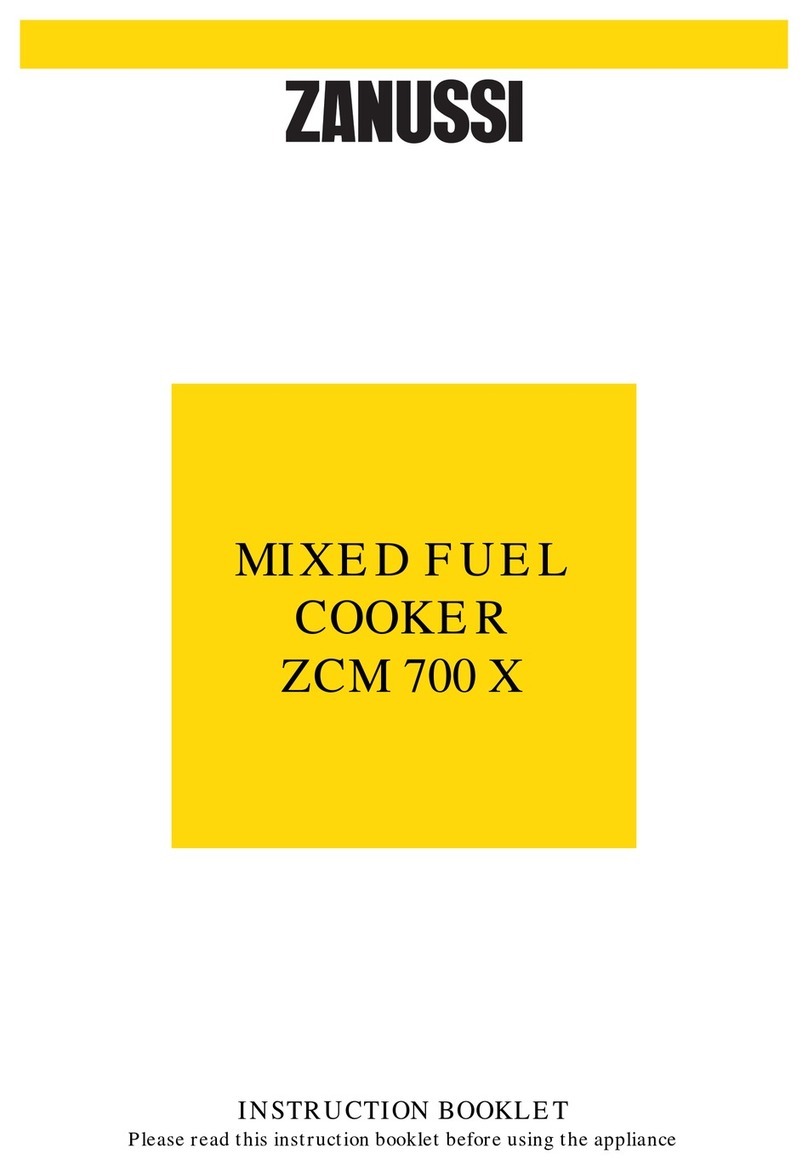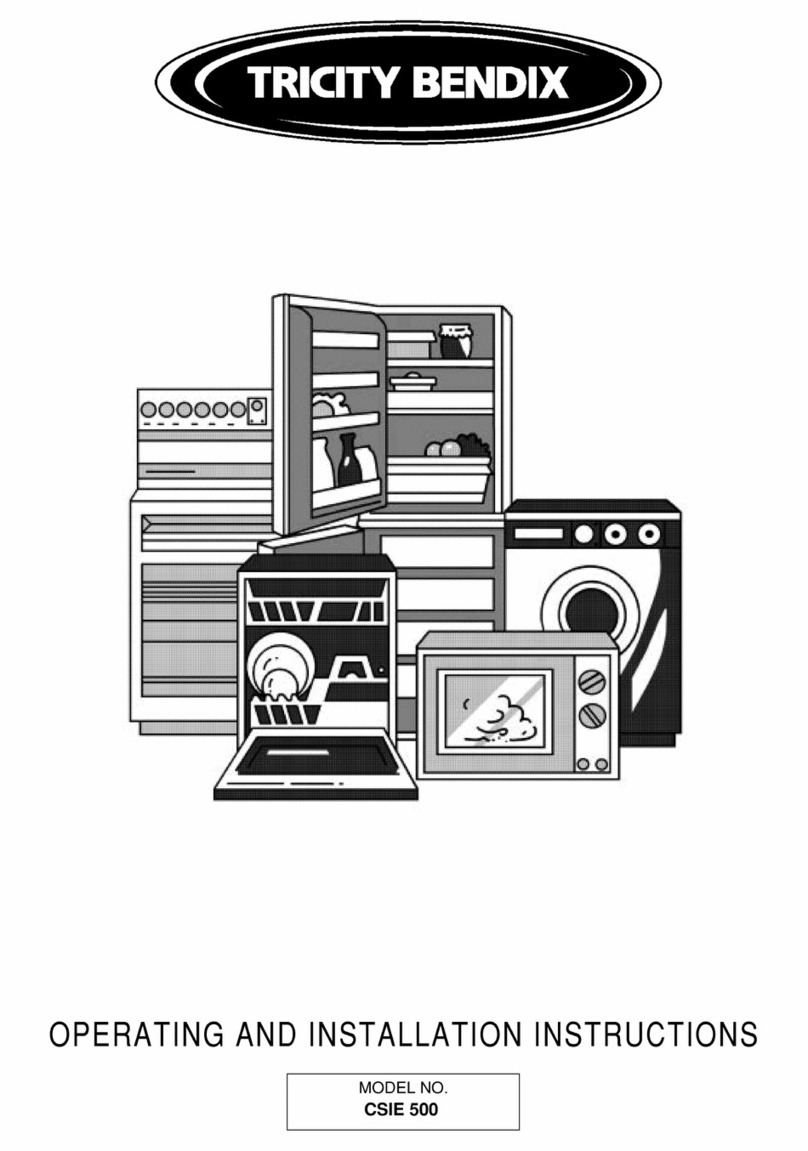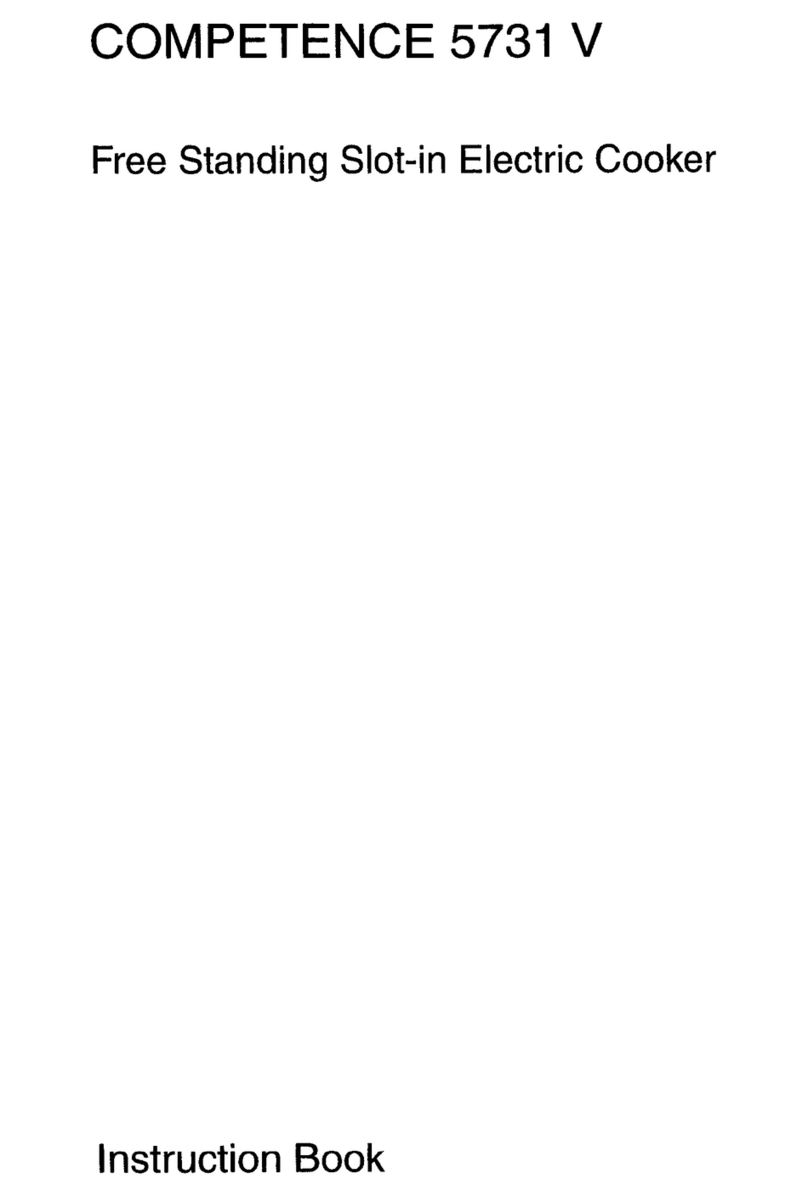17
GB
Unlocking the programmer
–Simultaneously press the buttons and and hold them until the indicator goes out.
5.9 SOUND SYGNALS THE PROGRAMMER EMITS
There is a possibility to turn off the signals emitted by the programmer.
1. Turning off the sound signals:
- press and hold the button down, at the same time press and hold down the button .
2. Activating the sound signals:
- press and hold the button down, at the same time press and hold down the button .
Caution !
Setting the function knob on position "0" does not disable the safety features.
6.CLEANINGANDMAINTENANCE
Warning !
Before proceeding with cleaning, disconnect the cooker from the electrical
power supply, and wait until it cools down.
6.1GENERAL REMARKS
•The cooker must not be cleaned with the use of any coarse-grained, abrasive powders, abrasive
sponges, aggressive chemical agents and sharp objects.
•The parts made of stainless steel, knobs and fascia panel should be cleaned with soft cleaning
liquids without any abrasive powders since they could damage the overprints.
•After using them, baking tins and forms, grates and roast pans should be soaked in luke-warm
water with the addition of washing liquid, then washed and carefully dried.
•Check to make sure that the oven door seal is clean.
CLEANING AND MAINTENANCE
6.2CLEANING THE CERAMIC HOB
•Clean the ceramic hob surface regularly after each use, as even the smallest dirt will bake
during the next use.
•The hob should be cleaned with the special cleaning agents intended for this purpose.
•Avoid using abrasive sponges, powders and creams.
•Small stains should be removed with a damp cloth or sponge (Fig. 13a) moistened with
lukewarm water with the addition of soft cleaning agent, then wipe the hob until it is dry.
•Heavy stains should be removed with the use of special agents for cleaning ceramic hobs.
•In order to remove food build-up from the ceramic hob, we advise to use a wooden blade or
special scraper (Fig. 13b), taking care not to scratch the glass surface of the hob.
WARNING !
Do not use oven cleaning agents for cleaning the ceramic hob, since they are
very aggressive and can cause the permanent damage to the hob surface.
•Keep away from the hob heating zones such materials as plastics, or aluminium foil, as they
can melt. In case they have malted onto the surface, remove them immediately from the hob
surface (when it is still warm). Similarly, with the foods with high sugar content; on the hot
surface of the hob, sugar can melt very quickly resulting in permanent stains. The change in
the hob surface colour does not affect its proper functioning.
6
ES
Ollademasiadopequeña Fondode laolla deformado Tapa no ajustada
Fig. 3
3 USO DE LA ENCIMERA VITROCERÁMICA
3.1 REGLAS GENERALES DE USO DE LA ENCIMERA VITROCERÁMICA
•Evitar caídas de objetos duros sobre la encimera ya que esta podría romperse.
•No rascar la superficie con puntas agudas de recipientes u objetos.
•La superficie de la encimera es resistente pero puede rayarse. Por ello es
aconsejable no rozar las ollas sino levantarlas al mover.
•Los recipientes deben colocarse en medio del círculo de foco marcado.
•Los focos pueden ponerse en marcha después de haber colocado encima la olla.
No se debe poner en marcha el foco con la olla vacía o con una olla de fondo
deformado; corre el riesgo de avería.
•En la encimera no pueden prepararse alimentos en lámina de aluminio o en
recipientes de plástico; tampoco se debe colocar objetos de plástico.
3.2 ELECCIÓN DE LOS RECIPIENTES ADECUADOS
•La selección de los recipientes adecuados es una de las condiciones del buen
funcionamiento de la encimera vitrocerámica.
•Las ollas deben tener fondos gruesos, planos y secos con diámetro igual o mayor
que el del foco. Si el diámetro del fondo de la olla es menor que el del foco, parte del
calor no se aprovecha.
!Correcto!
• Poco consumo de energía
• Buena conducción de calor
- ollas planas
-diámetro del fondo igual al del foco
- tapa bien ajustada
•La superficie del fondo deformada aumenta el tiempo de cocción y el consumo de
energía eléctrica.
!Incorrecto!
• Mucho consumo de energía
• Mala conducción de calor
• Largo tiempo de cocción
USO DE LA ENCIMERA VITROCERÁMICA
